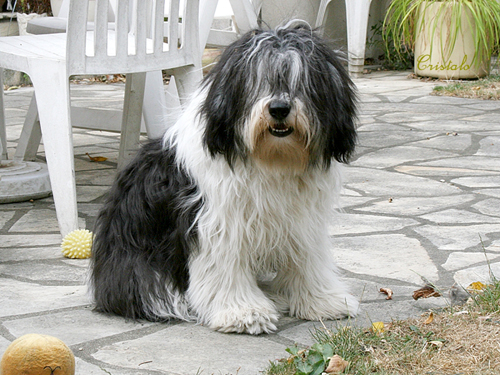| Quercetin—The Anti-Allergy
Bioflavonoid For Your PON

Seasonal changes with strong winds, trigger PON allergies
with trillions of airborne pollen, dust, and smoke particles.
Wind plays a large role in determining how much PON allergies
will act up. Windy conditions cause greater pollen and mold
distribution and that leads to an increase in allergy symptoms.
Plant pollens carried by the wind are the cause of most allergic
reactions.
. Veterinarian prescribed anti-allergy drugs (antihistamines)
tend to leave PONS either sleepy or over-stimulated.
Fortunately, modern nutritional science offers a highly
effective, natural and nontoxic remedy for allergies:
Quercetin, related to the more well-known bioflavonoid rutin,
is one of a thousand or so members of the bioflavonoid family.
This group of coloring pigments is found throughout the
plant kingdom, where they provide plants with antioxidant
protection against environmental stresses. Natural diets high in
vegetables, fruit, sprouts, and whole grains provide a total of
1,000 to 2,000 mg. a day of a broad range of flavonoids.
However, most dogs lack sufficient levels. Blue-green algae are
also an excellent source of quercetin, but it's also available
as a food supplement.
Informed PON owners know that allergies are inflammatory
conditions usually triggered by air- or food-borne pollens and
chemicals called "allergens." After these allergens are absorbed
into the blood (through the lungs, skin, or intestines), they
cause the B cells (white blood cells) of allergy-sufferers to
produce billions of molecules of the allergic antibody IgE. The
IgE molecules then travel through the bloodstream until they
combine to with mast cells or basophils. Mast cells (which line
many blood vessels) and basophils (a type of white blood cell
circulating in the bloodstream) are the main storage sites for
histamine and serotonin. The IgE allergic antibody then causes
the cell membranes of the mast cells/basophils to become "leaky,
" allowing their storage load of histamine and serotonin to pour
into the surrounding blood and tissues. The IgE-released
histamine and serotonin then produce the familiar allergic
symptoms of scratching, loose stools, running eyes, etc. among
PONS and other dog breeds.
Quercetin has a strong affinity for mast cells and
basophils. It tends to stabilize their cell membranes,
preventing them from spilling their pro-inflammatory,
allergy-symptom-causing load of histamine/serotonin into the
surrounding blood and tissue in response to the IgE antibody.
And without the release of these potent inflammatory mediators,
the familiar misery of allergies simply will not occur, even
though PONS inhale the pollen, etc.
Quercetin is a safe, nontoxic substance. A report by I.
Hirono et al in Cancer Letters (1981), for example, found no
evidence of toxicity or carcinogenicity in rats, even when
quercetin made up 10 percent of their total dietary
intake.Unfortunately, quercetin is barely soluble in water, so
poor dietary absorption may limit its efficacy. Because of this,
Murray, N.D., has suggested that quercetin be taken in
combination with bromelain to improve its absorption. Bromelain
is a natural, protein-digesting enzyme derived from pineapples.
It has been used "to increase absorption of compounds, including
antibiotics. Also, bromelain has powerful anti-inflammatory
properties that synergize with quercetin.
|

